
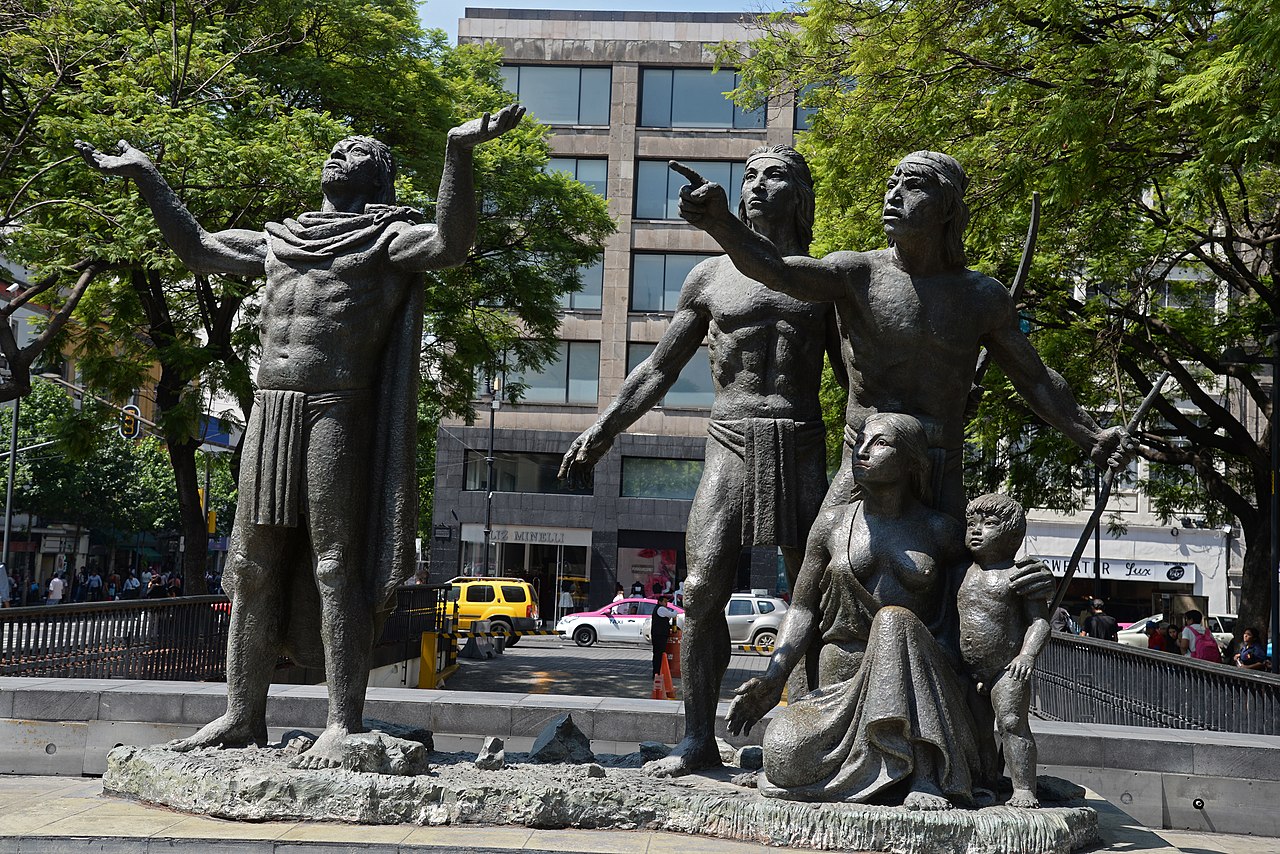
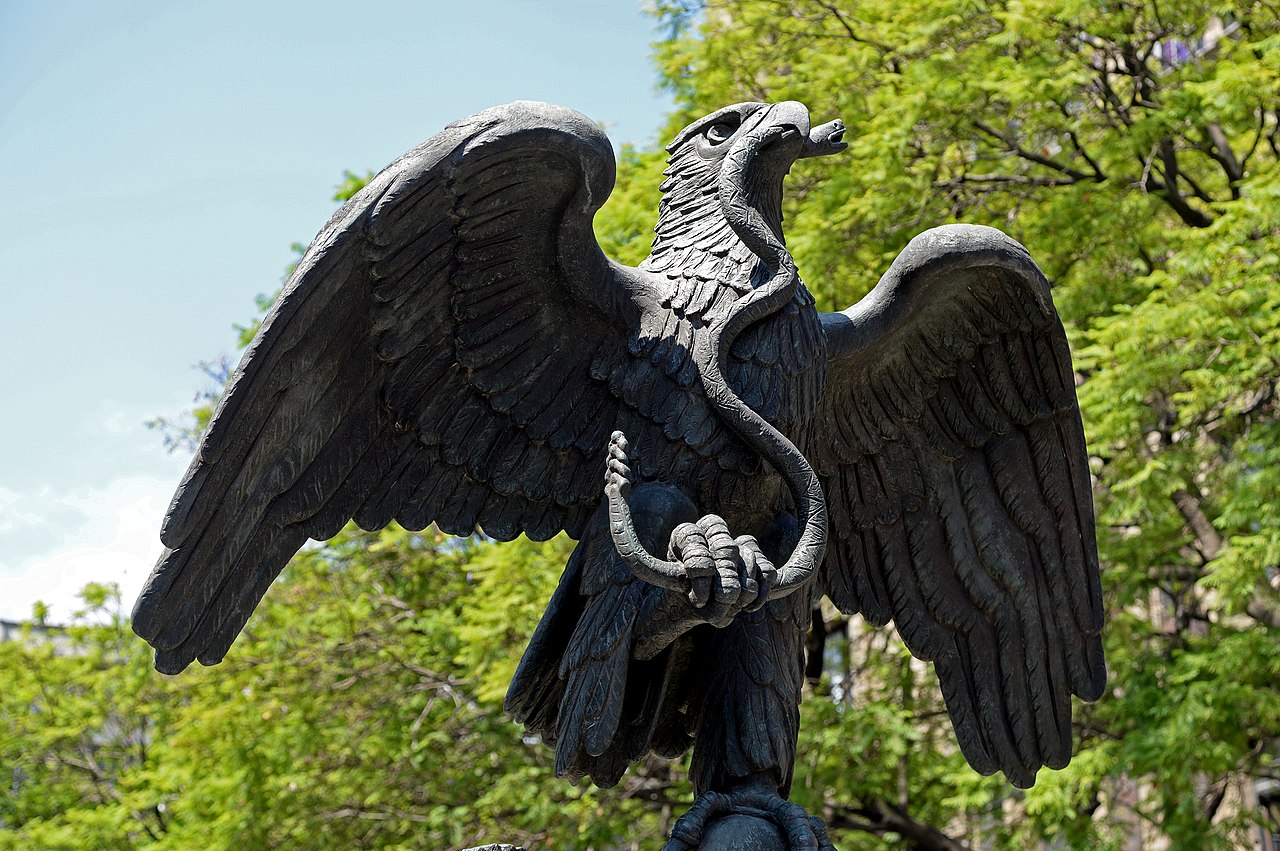
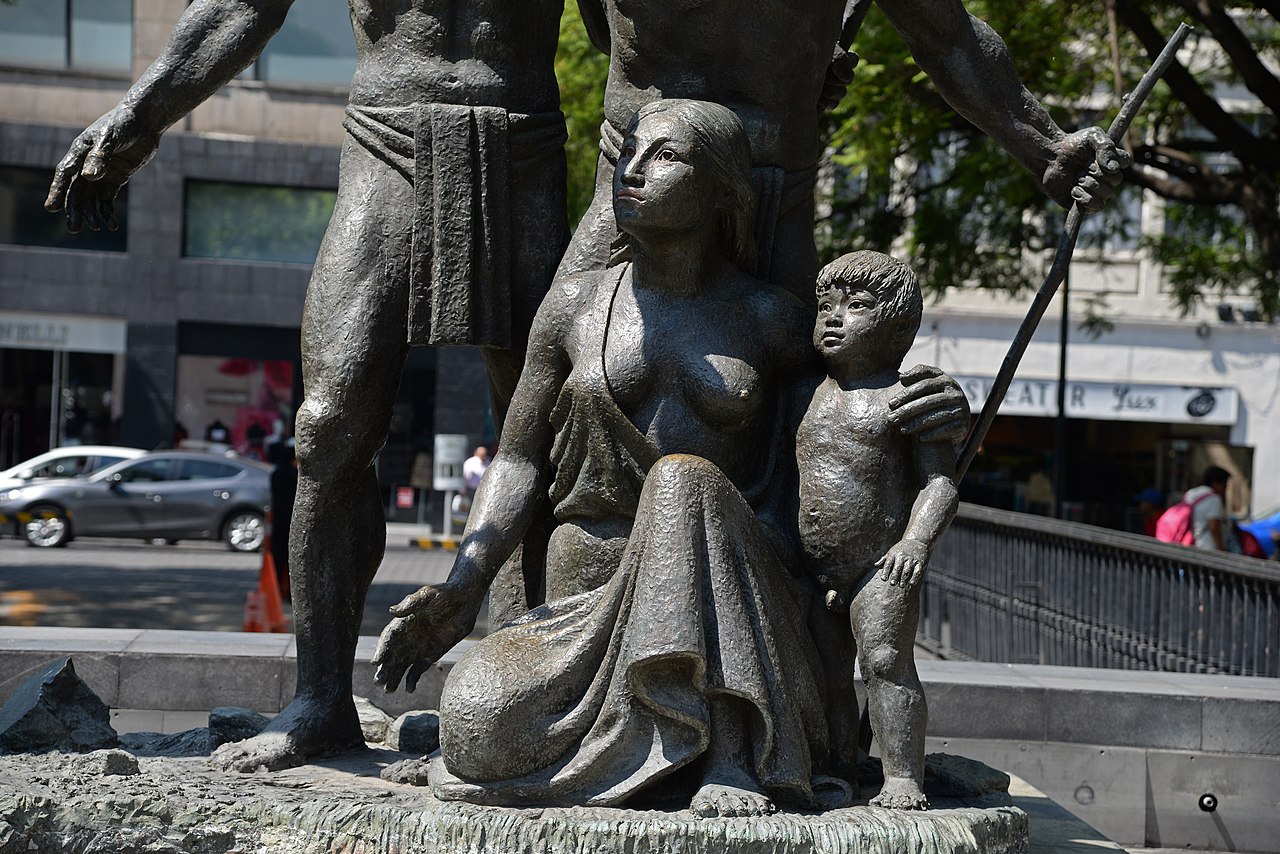
Fotos: Wojciech Kocot, Attribution-Share Alike 4.0 International
La Plaza de la Fundación, de la fundación, celebra la legendaria fundación de la Gran Tenochtitlan en 1325. Pequeño vástago del Zócalo, está justo en la esquina sureste. En los extremos norte y sur de la plaza hay dos escaleras que llevan a la estación de Metro Zócalo/Tenochtitlán. Otras dos están justo enfrente, en la acera opuesta al edificio de la Suprema Corte de Justicia. Al oeste se encuentra el edificio del Gobierno de la Ciudad de México, y gran parte de la plaza se abre directamente a los “arcos”, el pórtico cubierto situado en la base del edificio.
El atributo más conocido de la plaza es la obra del artista Carlos Marquina. La escultura de 1970 representa el avistamiento en 1325 del águila devorando a la serpiente sobre un nopal. Ese avistamiento puso fin al viaje de los mexicas desde la (probablemente mítica) Aztlán, la ciudad de la que proceden todos los nahuas. Según algunas fuentes legendarias, la migración comenzó el 24 de mayo de 1064. Las figuras de bronce y el águila están montadas sobre un mosaico que representa la fundación tal y como aparece en el Códice Mendoza de 1541.
La obra definió la plaza poco después de su inauguración en 1970. Pero el monumento data precisamente del momento en que Ciudad de México inauguraba el metro. Llevaba casi una década construyendo intensamente metros “modernos”.
La plaza, y no es una ironía, también recibe el nombre de Plaza de la Mexicanidad. Mexicanidad, o mexicayotl en lengua náhuatl, se refiere a la esencia de la mexicanidad. Se trata de un movimiento intelectual que surgió en la década de 1950. Comenzó con un grupo de intelectuales en torno a Antonio Velasco Piña (1935-2020). Escritor espiritual, ensayista y novelista. El grupo dedicó su obra a la lucha cívica pacifista y espiritual, y representó tanto un rechazo de la herencia católica romana como un renovado interés popular por la cultura y la religión indígenas y mesoamericanas. Muchos adeptos, Velasco entre ellos, participaron en los movimientos estudiantiles anteriores y posteriores a la dedicación del monumento.
En la actualidad, la plaza sirve con frecuencia como escenario de seguridad. Está relacionada con las operaciones gubernamentales tanto en el Palacio Nacional como en otras instalaciones de la zona. También es utilizada por activistas que organizan manifestaciones en toda la zona del Zócalo. Como zona de sombra, la Plaza de la Fundación acoge con frecuencia a viajeros y visitantes, oficinistas y artistas, precisamente la mezcla que debe tener una plaza de la ciudad.
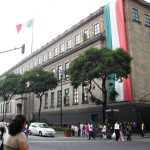
Cercano a 0.03 kms.
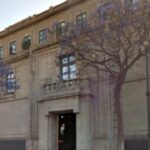
Cercano a 0.06 kms.

Cercano a 0.08 kms.

Site of the rebirth of Modern Mexico from its ancient roots . . .

Un hotel emblemático al borde de la plaza principal de Ciudad de México . . .
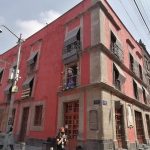
One of the Center City's most important cultural centers with a small fascinating museum...
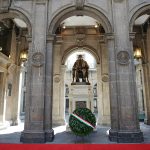
Un museo histórico dentro del Palacio Nacional...
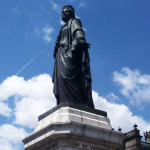
Un misterioso monumento en la esquina de la Catedral de la Ciudad de México...